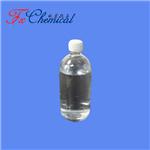Description
Hexyl hexanoate has a herbaceous odor. May be synthesized by
passing n-hexyl alcohol over CuO + UO3 catalyst at 220 - 310°C,
or by treating n-hexyl alcohol with Ca(Br03)2 and diluted aqueous
HBr at 30°C.
Chemical Properties
Oily liquid
Chemical Properties
Hexyl hexanoate has an herbaceous odor
Occurrence
Reported found in apple, apricot, banana, sweet cherry, orange peel oil, guava, grapes, melon, papaya, strawberry
fruit and jam, tomato, Parmesan cheese, rum, cider, sherry, grape wine, black tea, passion fruit, plum, mushroom, starfruit, quince,
cherimoya, mountain papaya, black choke cherry, spineless monkey orange, Chinese quince peel and hog plum (Spondias mombins L.)
Uses
Hexyl hexanoate is probably more often used in
flavor compositions, mainly in fruit flavors
to add freshness and a touch of green note
to various berry and fruit imitations flavors.
It gives good effects in Strawbemy, a flavor in
which the Hexyl family plays an important
role. Concentrations are usually as low as 2 to
10 ppm in the finished product. Approved for use in food flavors by the
American F.R.
Preparation
By passing n-hexyl alcohol over CuO + UO3 catalyst at 220 to 310°C, or by treating n-hexyl alcohol with Ca(BrO3)2 and
diluted aqueous HBr at 30°C
Definition
ChEBI: Hexyl hexanoate is a hexanoate ester obtained by the formal condensation of the carboxy group of hexanoic acid (caproic acid) with hexan-1-ol. It is a constituent found in passion fruit, apples, strawberries and wine. It has a role as a plant metabolite, a volatile oil component, a flavouring agent and a fragrance. It is functionally related to a hexan-1-ol.
Aroma threshold values
Detection: 6.4 ppm
Taste threshold values
Taste characteristics at 40 ppm: sweet, fruity and green with tropical notes.
Synthesis Reference(s)
The Journal of Organic Chemistry, 43, p. 371, 1978
DOI: 10.1021/jo00396a054
Flammability and Explosibility
Not classified



